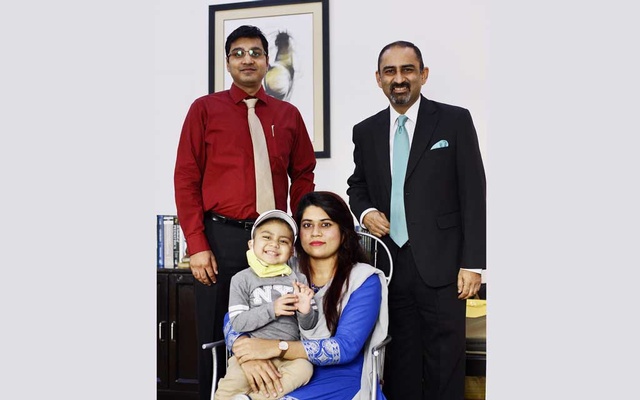They won the grand prize in the IEEE President’s Change the World Competition
By ANIA MONACO
Bangladesh is facing the world’s largest mass poisoning in history, according to the World Health Organization. More than 70 million people there are drinking arsenic-contaminated water, and because of this 1.2 million patients are annually diagnosed with hyper pigmentation, an early sign of skin cancer. Drinking the contaminated water also can lead to gangrene, paralysis, and death.
Not only do people drink the contaminated well water, which becomes tainted because the naturally occurring arsenic leaches into the water table, but the tainted water also irrigates crops. And this leads to even more trouble, including a contaminated food chain, constrained agricultural exports, and inhibited economic growth in a country where 80 percent of the labor force depends on farming. Until now technologies for filtering out arsenic have been expensive, and requiring a reliable supply of electricity and trained maintenance teams to keep them operating.
But a group of graduate students at the University of Oxford, in England, that includes an IEEE member have developed an environmentally friendly, inexpensive, simple filtration system that can bring clean drinking water to the region. The system they built can purify water from potentially deadly levels down to the safe WHO limit at a rate of up to 1.5 liters per minute.
The core of the system is a fern—not indigenous to Bangladesh but one that grows well in the climate—that has the peculiar property of being able to absorb arsenic from water. A complete system can be built and maintained by local villagers. And because it’s modular, the students say the system can be scaled to serve a single household or a small village.
For their project, called “Clean Water: Transforming a Natural Disaster into a Natural Resource,” the students won the grand prize—the IEEE Student Humanitarian Supreme Prize—in this year’s IEEE President’s Change the World Competition. The annual competition challenges students to identify a real-world problem and apply engineering, science, computing, and leadership skills to solve it. The team comprises IEEE Member Stephen Honan, a master’s student in geography and the environment; Kevin Baum, an MBA candidate; and Sarah Yazouri, who received a master’s in water science, policy, and management earlier this year. The team received the award, which comes with US $10 000, at the annual IEEE Honors Ceremony, held in June in Boston.
“Receiving this level of recognition from the world’s largest professional technology association has validated our work and energized us to actualize our goal of providing clean drinking water to everyone in Bangladesh,” says Honan.
GREEN INFLUENCE
The team was inspired to design the system after learning about this very special fern. “Our inspiration came from an up-and-coming field called phytoremediation, which is the use of a plant to rapidly accumulate heavy metal toxins,” Honan says. “We carefully selected a plant—the Pteris mayii fern—that has a high propensity towards accumulating arsenic and safely storing it.
“The filter is composed of a series of channels that are staggered on different levels to allow gravity to pull the water through the cascading system and aerate the water between each step,” Honan explains. Aeration is necessary to maintain a healthy environment for the plants. The ferns, which are grown hydroponically, are suspended directly in the channels, which can be made of recycled containers. The container for the filter is made from discarded vessels, such as clay flower pots or plastic buckets. “The toxin is then translocated into the above ground biomass and stored as though it were the nutrient phosphate, Honan explains. “The significance of the storage is that the arsenic is transported up and out of the roots and stored as though it were a nutrient. The arsenic is stored within the confines of the hard shelled cell walls, so the plant itself is safe to touch.”
The team is currently testing its system in a village in Bangladesh and expects to publish results of the study by the end of the year.
Furthermore, the group is developing a recycling process for the waste product of the filter, the dead fern leaves. “The waste can be treated with a series of chemicals in order to isolate the arsenic in a form that can be sold to semiconductor or solar panel manufacturers who use Gallium arsenide in their production process,” Honan says. “This recycling scheme can cover the cost of setup, local maintenance, and overhead associated with the filtration system. Hopefully we can turn a negative and destructive problem for Bangladesh into an environmentally friendly and productive solution to harvesting arsenic. Right now, the method of producing arsenic is environmentally degrading and releases sulfuric emissions, which causes acid rain.”
Honan and his colleagues are now filing for nonprofit status and looking for a partner to assist in bringing the filter systems to Bangladesh.
“We are hoping to see everyone in Bangladesh have access to clean drinking water,” Honan says.
Source: The Institute










